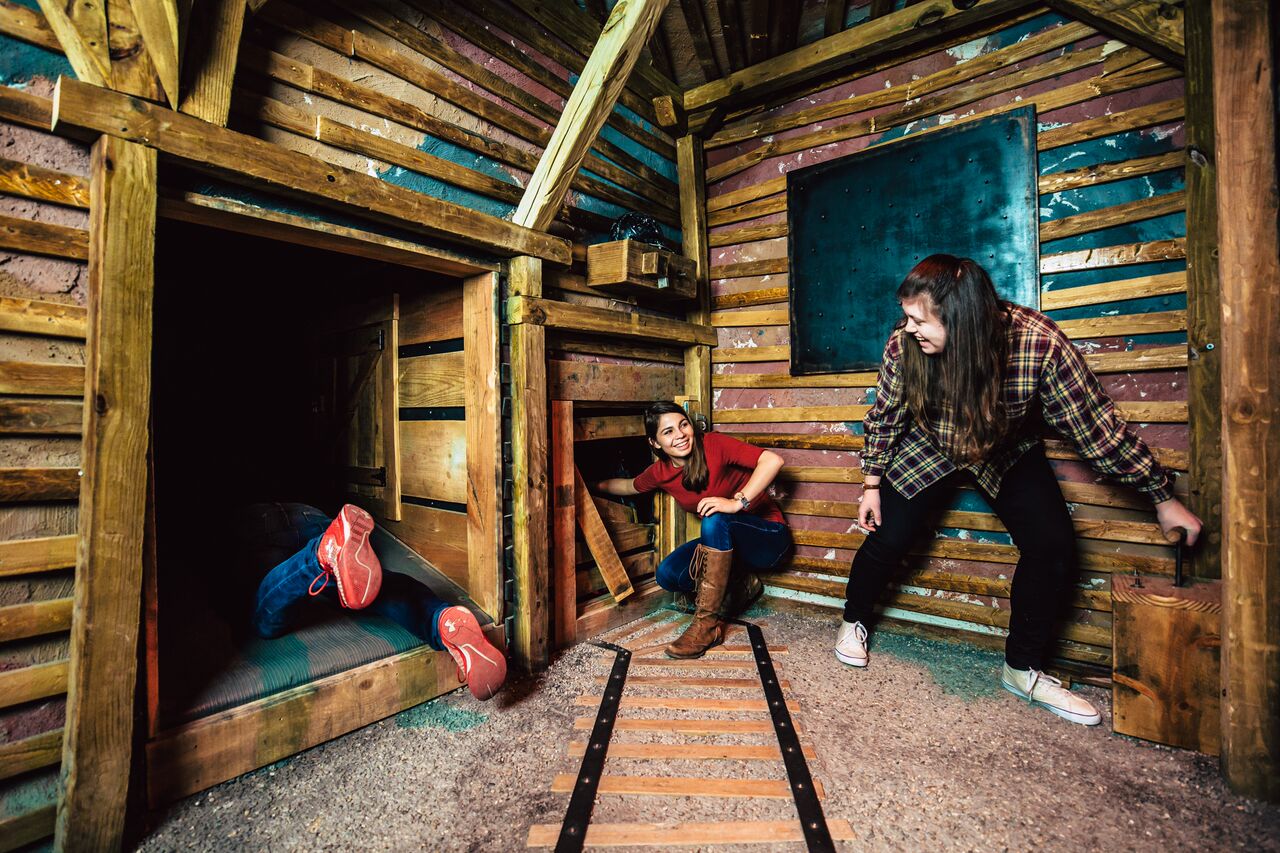Escape Room Minneapolis Mall of America-- Immersive and Fun
Escape Room Minneapolis Mall of America-- Immersive and Fun
Blog Article
Group Methods: How to Collaborate Successfully in an Escape Room
Teams must proactively listen to each participant's insights, appoint duties that align with specific staminas, and maintain routine check-ins to ensure emphasis and prevent redundancy. By cultivating an atmosphere that values communication and versatility, groups can substantially heighten their effectiveness and success rates.
Establish Clear Interaction
To help with clear interaction, it is vital to assign a central point of call for information dissemination. Quick, focused updates from each team participant can maintain the team informed without frustrating them with details.

Designate Functions Tactically
While clear interaction sets the structure for efficient synergy, designating roles purposefully makes certain that each group member's toughness are utilized properly. In a getaway area situation, the time-sensitive and intricate nature of difficulties necessitates an efficient approach to job delegation. By identifying and leveraging private competencies, teams can maximize their problem-solving capacities and enhance general efficiency.
First, evaluate the one-of-a-kind skills and features of each participant. Someone with an eager eye for information might succeed in finding hidden things, while a sensible thinker can be much better fit to solving puzzles. It's similarly important to have a leader who can manage development, manage the timeline, and make decisive calls when necessary. This function frequently needs solid business and social abilities.
Second, make sure that functions are versatile and versatile. As brand-new difficulties arise, the team should be able to pivot, reallocating tasks as required. This adaptability helps maintain momentum and prevents traffic jams that can happen because of stiff role assignments.
Ultimately, a calculated technique to function project not only maximizes the toughness of each group member but also cultivates a natural atmosphere, driving the team in the direction of an effective escape.
Utilize Diverse Abilities
Acknowledging and harnessing the varied skills within your group can considerably elevate your efficiency in a getaway area. Each employee brings special strengths to the table, and successfully leveraging these capabilities can quicken problem-solving and boost general performance. For example, an employee with solid analytical skills could excel at decoding complicated codes or patterns, while another with keen empirical abilities may promptly find concealed clues that others may ignore.
Reliable communication is key to utilizing these diverse abilities. Encourage team members to voice their insights and ideas quickly, guaranteeing that all possible remedies are taken into consideration. This inclusive method cultivates a dynamic environment where creative thinking and essential thinking can thrive. Furthermore, appointing jobs that line up with each participant's staminas can protect against traffic jams and make certain that progression is continual.
Moreover, diversity in skills commonly translates to diversity in believing styles, which is indispensable in a getaway area setup. While some obstacles may need rational reasoning and accuracy, others may take advantage of imaginative and association of ideas. By acknowledging and leveraging this variety, teams can address a broader variety of challenges a lot more successfully, therefore raising their opportunities of a successful retreat.
Manage Time Successfully

First, allot initial mins for a fast study of the room. Recognize visible problems and divide jobs based on team members' strengths, ensuring that nobody is still. Set internal time checkpoints to review development regularly; for example, purpose to have half the puzzles fixed by the mid-point of the video game. This technique can help maintain the group concentrated and prevent time from sliding away undetected.
Additionally, prevent one-track mind. If a challenge is taking as well long, turn employee or carry on to another obstacle, returning later with fresh point of views. Interaction is critical-- keep everyone updated on resolved problems and staying tasks to avoid repetitive efforts.
Lastly, utilize any type of hints my blog or ideas sparingly yet strategically - best escape room. Knowing when to request for assistance can conserve beneficial time. By adhering to these time administration concepts, teams can significantly boost their possibilities of an effective and pleasurable retreat area experience
Debrief and Reflect
Representation is an essential facet of team advancement and improvement in the context of escape spaces. When the obstacle is completed, whether effectively or otherwise, it is critical for the group to engage in a structured debriefing session. This process permits team members to analyze their efficiency, determine strengths, and determine locations for enhancement.
Start the debrief by reviewing what went well. Highlight particular instances of efficient interaction, analytic, and cooperation. Identifying these positive behaviors reinforces them and motivates their repetition in future difficulties.
Review moments of complication, miscommunication, or inadequate techniques. Encourage an open and constructive dialogue where team participants can share their perspectives without fear of objection.
Verdict
In final thought, effective collaboration in a getaway area is predicated upon clear communication, calculated duty projects, the reliable utilization of varied abilities, and competent time monitoring. Routine check-ins and structured debriefings are vital for maintaining focus and fostering continual enhancement. By creating a natural and flexible group environment, the possibility of effectively addressing problems and accomplishing click here now the purpose of escaping the area is dramatically boosted. This technique not just guarantees success however also promotes collective development and understanding.
Report this page